The right choice of current transformer for the meter
Variety of devices
When choosing a transformer, it is necessary to take into account its location (closed or open distribution units, embedded systems), as well as design features of the design (feed-through, bus, support, split).
The CT loop-through is installed in complex switchgears and is used as a bushing insulator. Supporting are used for installation on a flat surface. The busbar CT is installed directly on live parts. The primary section of the transformer is the bus section. Built-in models as a structural element are installed in power transformers, oil circuit breakers, etc. Detachable CTs are made collapsible for quick installation on cable cores, without physical interference with the integrity of electrical networks.
In addition, the separation also takes place according to the type of insulation used:
- cast;
- plastic case;
- solid;
- viscous compound;
- oil-filled;
- gas filled;
- mixed paper oil.
And distinguished by specification and scope:
- commercial accounting and measurement;
- protection of power supply systems;
- measuring current parameters;
- control and fixing of effective values;
Voltage transformers also differ: for electrical installations up to 1000 Volts and above.
Selection rules
When choosing a transformer, its voltage should not be less than the rated voltage of the meter.
U nom ≥ U mouth
We do the same when choosing a CT for current, which should be equal to or greater than the maximum current of the controlled installation. Taking into account emergency operation modes.
I nom ≥ I max.
The PUE describes the rules and regulatory requirements for commercial metering devices by counters, as well as a lot of attention is paid to current transformers and rated power standards. You can get acquainted in detail in paragraph PUE 1.5.1 (Chapter 1.5).
In addition, there are the following rules for choosing a current transformer for a meter:
- The length and cross-section of the conductors from the CT to the metering unit should provide a minimum voltage loss (not more than 0.25% for an accuracy class of 0.5 and 0.5% for transformers with an accuracy of 1.0). For meters used for technical metering, a voltage drop of 1.5% of the nominal voltage is allowed.
- For AIIS KUE systems, transformers must have a high accuracy class. For installation in such systems, CTs of class S 0.5S and 0.2S are used, allowing to increase metering accuracy at minimum primary currents.
- For commercial accounting, you need to select a accuracy class of CT no more than 0.5. When using a precision meter 2.0 and for technical metering, a class 1.0 transformer is allowed.
- The choice of CTs with overestimated transformation is allowed if, at the maximum load current, the current in the transformer is not less than 40% of I nom electric meter.
- When calculating the amount of energy consumed, it is necessary to take into account the conversion coefficient.
- The calculation of CT parameters is carried out depending on the conductor cross section and the rated power.
Calculation example:
According to the table below, according to the resulting calculated parameters, select the nearest TT:
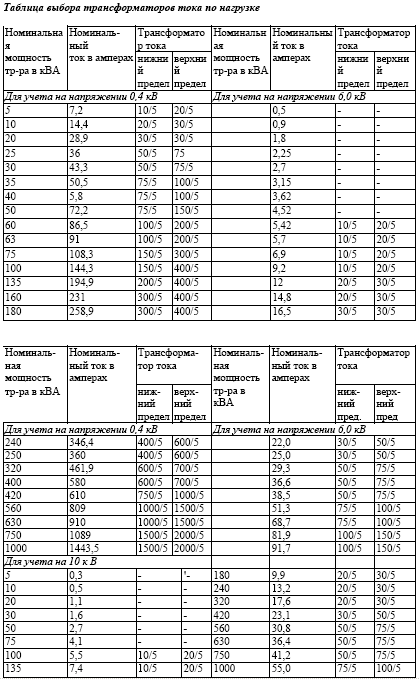
When concluding an agreement with a power supply organization, in the case when the installation of current transformers is necessary for metering, for the organization of a metering station, technical conditions are issued that indicate the model of the metering station as well as the type of current transformer, rating of circuit breakers and their installation location for a particular organization. As a result, there is no need to perform independent CT calculations.
Finally, we advise readers https://my.electricianexp.com/en watch useful video on the topic:
We hope that now it has become clear to you how to choose current transformers for meters and what types of CTs are available. We hope the information provided was useful and interesting for you!
Surely you do not know:


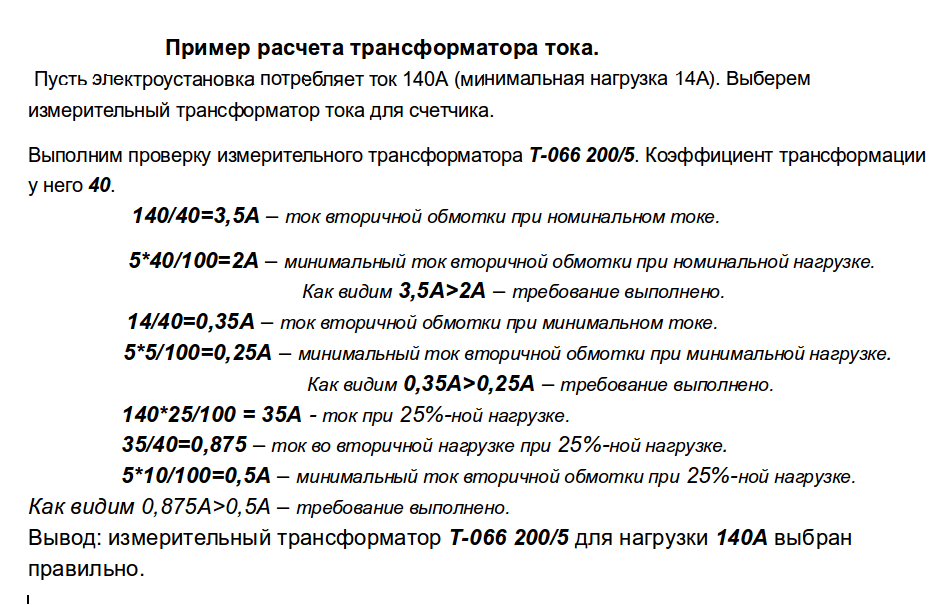



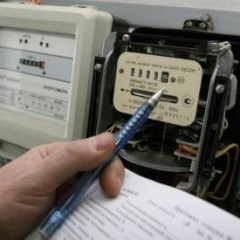
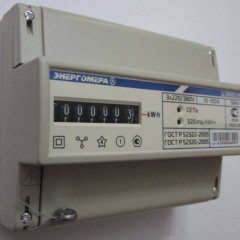
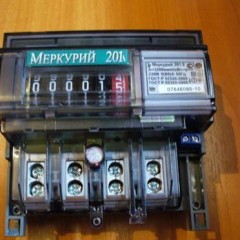

Hello! Tell me, from what standard is the load selection table for CTs?
help me choose current transformers and a counter!
furnace transformer 250kVA, rated current 659 A. Transformer power 2 phase 380V.